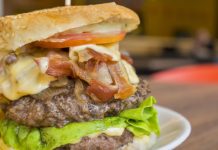
Exposure to the fatty acid palmitate that is present in foods that contain large amounts of saturated fat can push the choice towards fat and not muscle cells
Exposure to fatty acid could make a precursor cell that could have developed either into a fat or a muscle cell, to take the former route. And it takes just 24 hours.
This change occurs when the cell is put into contact with the fatty acid palmitate or the hormone TNF-alpha, a study conducted by researchers from the Novo Nordisk Foundation Center for Basic Metabolic Research at the University of Copenhagen shows. The study, ‘Preadipocytes from obese humans with type 2 diabetes are epigenetically reprogrammed at genes controlling adipose tissue function’ has been published in the International Journal of Obesity.
Precursor cells are cells that have not yet matured to undertake a specific function in the body, e.g. the function of a muscle or fat cell. Palmitate and TNF-alpha are able to disturb the development of the cell, causing it to develop into a dysfunctional fat cell later in its life. In particular, this reprogramming is found in obese patients suffering from type 2 diabetes, the researchers have found.
“Our results stress the importance of a healthy diet and lifestyle for our metabolic health in the years to come. To a large extent, a healthy diet and healthy lifestyle can help prevent the reprogramming of our precursor cells.”
We are exposed to palmitate through the food we eat. Especially foods containing large amounts of saturated fat such as dairy products, meat and palm oil are plentiful in palmitate. TNF-alpha is an inflammatory hormone that is secreted in the body during illness. Obese patients also have a higher level of TNF-alpha, as obesity is linked to inflammation.
“Our results stress the importance of a healthy diet and lifestyle for our metabolic health in the years to come. To a large extent, a healthy diet and healthy lifestyle can help prevent the reprogramming of our precursor cells. In the long term, we hope our study may be at the origin of new strategies to reverse the abnormal programming of fat precursor cells, making them healthy and functional once again”, says Romain Barrès, who is at the head of the study.
Several studies have suggested that human precursor cells have a memory of past environmental exposures. But until now no one has been able to identify the factors affecting the reprogramming of precursor fat cells or establish the rapidity at which cells are reprogrammed.
In cooperation with the Surgical Gastroenterology unit at Hvidovre Hospital, the researchers collected fat tissue from 43 planned operations. 15 patients were lean, 14 were obese and 14 were obese and suffered from type 2 diabetes. By collecting samples from three different groups of patients, the researchers were able to compare the health of the precursor fat cells of the three groups.
The team learned that the cells from the group of obese patients suffering from type 2 diabetes had been reprogrammed and therefore did not function like normal, healthy fat cells. By exposing healthy precursor fat cells to the two external factors for just 24 hours the researchers were able to mimic the reprogramming they had observed in cells from the diabetic patients.












